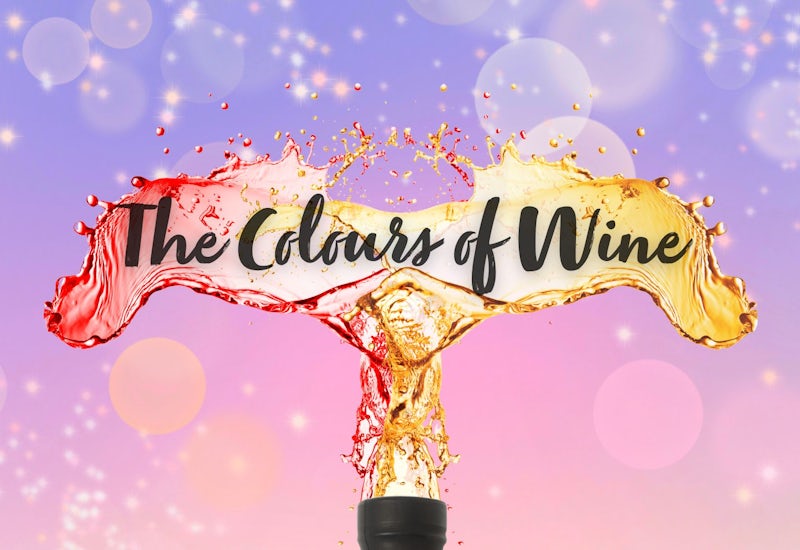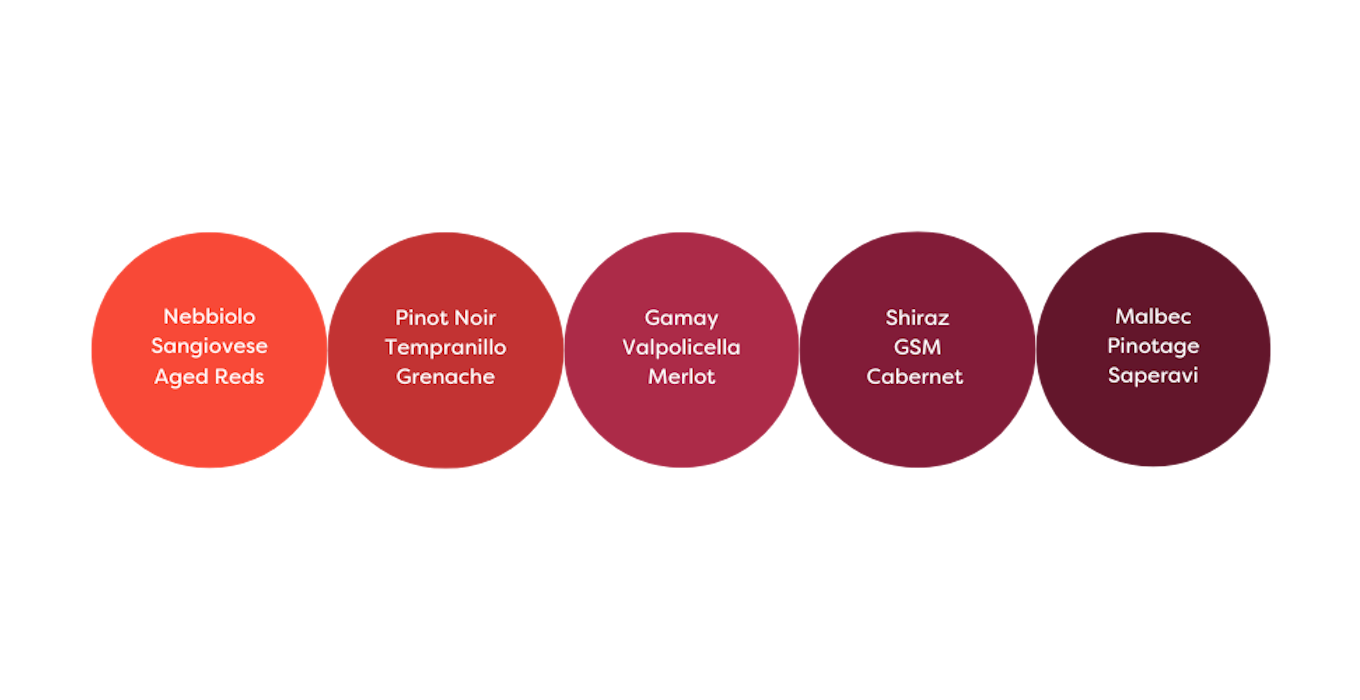16.03.2023
The colour of wine

We all know wine is made from grapes, but the way that wine looks, smells and tastes is greatly determined by not only the type of grapes used, but what happens to those grapes after they've been crushed.
Did you know you can make a white wine from red grape varieties!? Let's have a look at the wine rainbow and discuss how that is possible.
So, why are some wines white, when others are yellow, orange, pink, red or purple? Basically, it all comes down to something as simple as how long the juice from crushed grapes stays in contact with its own skins!
White wine is generally made from white varieties like Riesling, Sauvignon Blanc, Chardonnay, etc... In the winery, the grapes are crushed and the juice separated from the skins to undergo fermentation. The result is a light straw, yellow or golden coloured wine that we know as white wine. Oak barrel fermentation and oxidative winemaking can give a golden hue to a white wine also.
Check out all white wines here
If the winemaker chooses to, they can leave the juice of white grape varieties on their skins for an extended period of time. Doing this adds deeper colour to the wine, along with tannins and complexity of flavour. The result is an deeper yellow or orange coloured wine that we call Orange wine...funnily enough!
Fortified whites like sherry, vin santo or tokaji have a deeper orange and brown colour.
If the juice of a red grape variety, like Shiraz, Sangiovese or Grenache, is left in contact with their skins for a short amount of time, the result is a pink, salmon or bronze coloured wine that we call Rosé wine.
For red wines, the juice of the red grape varieties are left on their skins for an extended period of time. The colour comes from pigments within the grape skins and colour the juice in varying shades that span the bright brick red all the way through to deep dark purple. The colour of the wine is grety dependent on the grape variety used.
Fun fact: there are only a handful of red fleshed grapes used to make wine which include Alicante Bousche, Saperavi, Chambourcin, Ruby Cabernet, Teroldego, Colorino and Black Monukka.

When wines age, their colour changes. White wines tend to develop deeper yellow/golden colours and even turn a little brown. Red wines tend to loose their colour and become more clear and garnet/tawny in colour.
For fortified wines like Port, Pedro Ximinez and Madeira, you can expect colours of brown and tawny. This is due to extended time in oak barrels and its age!
So, can you make a white wine from red grape varieties? Of course you can and all you need to do is crush the grapes and remove it from its skins as quickly as possible. What you'll be left with is clear grape juice, ready to be turned into wine.





